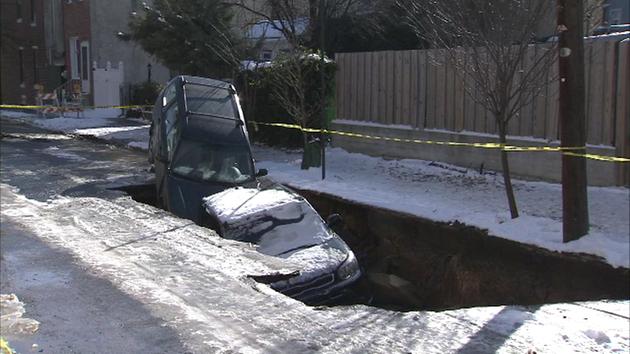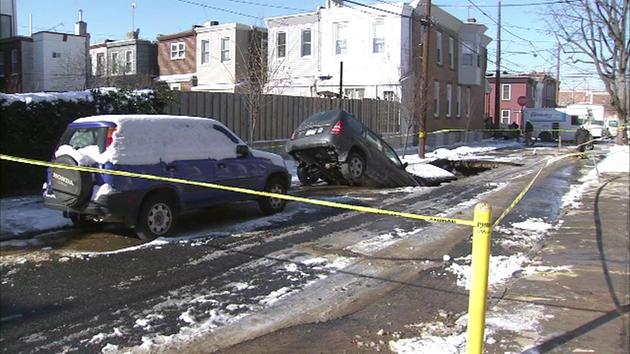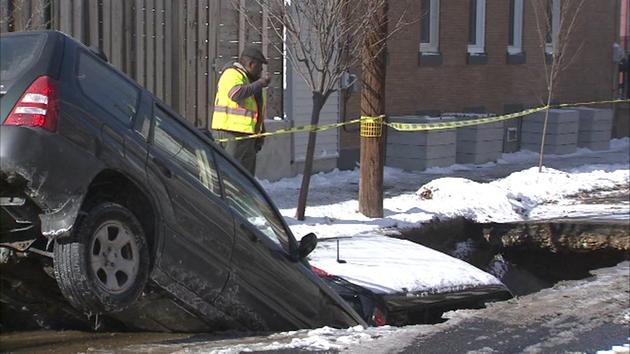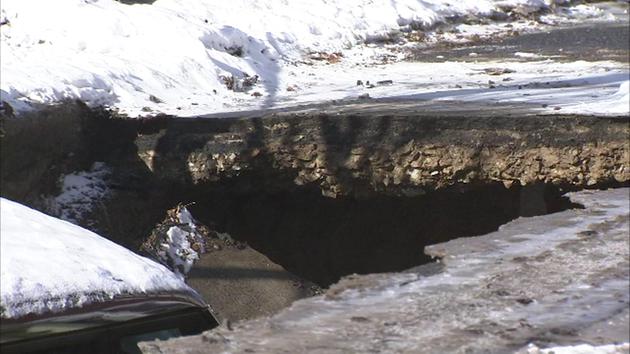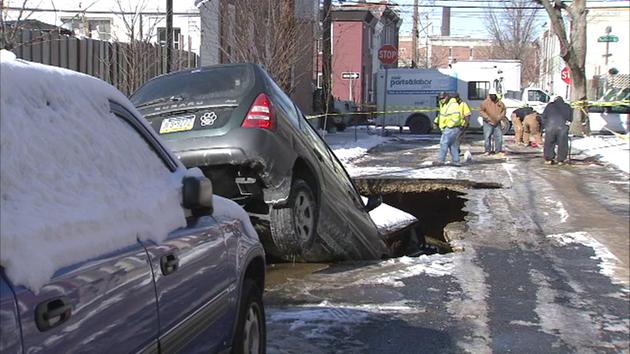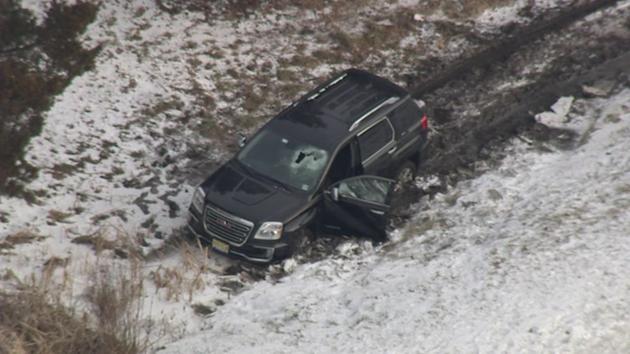Here you will find information related to the efforts of the Judiciary and its criminal justice reform partners in state, county and municipal government to implement bail and speedy trial reform and to form a pretrial services unit.
On Jan. 1, 2017, the state shifted from a system that relies principally on setting monetary bail as a condition of release to a risk-based system that is more objective, and thus fairer to defendants because it is unrelated to their ability to pay monetary bail. The statute also sets deadlines for the timely filing of an indictment and the disposition of criminal charges for incarcerated defendants.
Q&A [+]
How will the speedy trial component work? [-]
The speedy trial component will set limits on the amount of time a defendant can remain detained before trial. There are three distinct speedy trial limits:
1) from arrest to indictment,
2) from indictment to trial, and
3) an overall limit from detention to trial
The law contains appropriate extensions of time for pretrial motions, competency hearings, plea negotiations, the consent of the parties, and other excludable time.
How did we get here? [-]
The move to reform the state's criminal justice system grew from the work of the Joint Committee on Criminal Justice, a special committee of the Supreme Court established by Chief Justice Stuart Rabner to examine the issues of bail and speedy trial reform. The committee included the attorney general, public defender, judges and representatives of the executive and legislative branches, county prosecutors, defense counsel, court administration and the American Civil Liberties Union.
It drafted a series of recommendations that were incorporated into landmark legislation. In addition, voters in November 2014 approved a constitutional change that becomes effective in January 2017 to permit judges to keep high-risk defendants detained without bail.
==========
Reforms bringing 'seismic shift' in bail, speedy trials, court officials say
A half day seminar was held at Essex County College attended by judges, prosecutors, attorneys and members of law enforcement which outlined reforms to the criminal justice starting in January designed o reduce the time defendants wait for bail hearings, and reduce the wait for a trial. Newark, NJ 9/15/16 (Robert Sciarrino | NJ Advance Media for NJ.com)
Robert Sciarrino | NJ Advance Media
By Tom Haydon | NJ Advance Media for NJ.com
on September 15, 2016 at 7:46 PM, updated September 17, 2016 at 6:42 PM
NEWARK -- In just over three months, New Jersey state courts will implement the most significant changes in decades in N.J. bail procedures, legal officials said at a seminar on Thursday.
Starting in January, if a person is held in jail, prosecutors will have 90 days to get an indictment, and then have 120 days to bring the person to trial, state judicial officials explained.
The reforms are aimed at cutting the number of people held on minor charges while keeping other defendants locked up without bail if they pose a threat to public safety and providing speedy trials for those held behind bars. Defendants now wait up to three years or more to come to trial, officials said Thursday.
State Supreme Court Chief Justice Stuart Rabner, speaking at the seminar, said people are often incarcerated for minor offenses because they are unable to post a low amount of bail.
Acting AG will prepare study on costs and hurdles related to "sweeping reforms" to criminal justice system.
"Even if they pose a minimal risk of flight, they can sit in jails for weeks, months," Rabner told the audience made up of judges, prosecutors, defense attorneys, public defenders and police and sheriff's officers. "They can lose jobs. They can lose contact with family."
Rabner cited statistics that one in 12 defendants remain in jails because they can't post bail of $2,500.
"We have the opportunity today to set our system on a better path," Rabner said.
Under the reforms, prosecutors will have to file a motion to keep a defendant locked up. Judges will make decisions at detention hearings that must be held within three days after a suspect is jailed.
"Bail reform is going to change everything in the judicial system. We will not lightly seek to detain an individual before trial," said Elie Honig, director of the Division of Criminal Justice in the state Attorney General's Office.
However, Honig said prosecutors want to detain anybody who threatens the safety and security of the public. He said witnesses to serious crimes often change their statements when they know a defendant is out of jail. The reforms will allow prosecutors to request that suspects be held without bail.
Previously, state law allowed a judge to deny bail only to defendants charged with offenses punishable by the death penalty. But the state abolished the death penalty in 2007.
Once the judicial reforms kick in courts will begin holding hearings on Saturdays, officials said.
State Public Defender Joseph Krakora said judges will review several factors in determining whether to keep a defendant in jail, including prior criminal offenses, prior failures to appear in court, and offenses committed while awaiting trial for another crime. The state has worked with a consultant to develop procedures for assessing defendants.
Judges will be able to decide to release persons with conditions, such as a curfew or a bracelet monitor. A new pre-trial services staff will supervise defendants who are released.
For defendants held on bail, defense lawyers will be able to come back within weeks and argue that the defendant is being detained solely because he can't afford the bail.
"This is a seismic shift. You have to get out of the culture of money bail," Krakora said.
Often as a trial lawyer, Krakora said, he saw defendants kept in jail because they could not post $1,000 or $500 bail. "There is no correlation that someone is more likely to come to court if they post bail," he said.
Two measures passed in recent years allowed for the development of the reforms. One was a bill Gov. Chris Christie signed into law establishing an alternative pre-trial release system so poor defendants are not stuck in jail because they can't afford bail. The other was a proposal approved by New Jersey voters to amend the state constitution allowing judges to deny pre-trial release to some defendants charged with serious crimes.
Similar seminars on the reforms will be conducted throughout the state in coming weeks.
=======
Editorial: Right to ‘speedy trial’ is in Constitution
NorthJersey 7:38 p.m. ET Dec. 29, 2016
In 2017, a large number of people charged with crimes in New Jersey will not go directly to jail. And that is a good thing. More important, it is a constitutional thing.
The Sixth Amendment states, “In all criminal prosecutions, the accused shall enjoy the right to a speedy and public trial.” That hasn’t always happened. Not at all. It is possible for defendants to sit in county jails for many months for a minor offense.
“We’ve got people waiting in jail for trial for minor offenses for over a year because they can’t raise $2,500 bail, and at the same time we have defendants accused serious crimes who have no trouble making even very high bail, and they are released," a judge told Record Staff Writer Jim Norman.
Reforms that will go into effect starting Sunday will not result in the random release of violent defendants, but rather ensure that individuals charged in non-violent cases will more often than not be released with limited restrictions. Someone charged, for example, with murder would have no option for bail or release at all.
Judges will use a three-part risk assessment to determine whether the defendant is a flight risk or a danger to the community, and whether he or she may try to threaten witnesses or victims. Giving judges the discretion to decide whether to set bail or not makes sense. Judges are in the best position to decide on a case-by-case basis.
As Norman reported, about 20 additional judges will need to be appointed statewide. Each new judge will require office space, support staff and a minimum of three county sheriff’s officers to ensure order in courtrooms. Courts will probably have to be operational on weekends as well, to ensure that criminal complaints are filed within 48 hours from when a defendant is detained in a county jail.
So this will not save money. That was not the point. Defendants, regardless of their financial circumstances, have a constitutional right to a “speedy trial.” County jails should not be filled with defendants who are never flight risks or dangerous.
Bail bondsmen are expected to take a big hit after these reforms are implemented. One owner of a bail bond business told The Record it would “take away 99 percent” of his industry’s business. That is not a reason for a judge to impose bail.
In 2014, New Jersey voters supported a constitutional amendment that prevents the most violent defendants from being released back into communities while they await trial. But there are distinctions to be made between an accused murderer and someone languishing for more than a year in a county jail on a minor offense.
Our only concern is that these reforms may not apply retroactively and defendants currently sitting in jails awaiting trial may not benefit. That should not happen.
The director of the New Jersey Association of Counties, which represents all 21 counties in the state, wants the Legislature to provide some economic relief to cover the costs of these reforms. But these are not new unfunded mandates coming from the state – this is a change in policy that reflects what is written in the Sixth Amendment.
The Constitution is not an unfunded mandate. These reforms come with a cost; so do our guaranteed civil liberties.
On Jan. 1, 2017, the state shifted from a system that relies principally on setting monetary bail as a condition of release to a risk-based system that is more objective, and thus fairer to defendants because it is unrelated to their ability to pay monetary bail. The statute also sets deadlines for the timely filing of an indictment and the disposition of criminal charges for incarcerated defendants.
Q&A [+]
How will the speedy trial component work? [-]
The speedy trial component will set limits on the amount of time a defendant can remain detained before trial. There are three distinct speedy trial limits:
1) from arrest to indictment,
2) from indictment to trial, and
3) an overall limit from detention to trial
The law contains appropriate extensions of time for pretrial motions, competency hearings, plea negotiations, the consent of the parties, and other excludable time.
How did we get here? [-]
The move to reform the state's criminal justice system grew from the work of the Joint Committee on Criminal Justice, a special committee of the Supreme Court established by Chief Justice Stuart Rabner to examine the issues of bail and speedy trial reform. The committee included the attorney general, public defender, judges and representatives of the executive and legislative branches, county prosecutors, defense counsel, court administration and the American Civil Liberties Union.
It drafted a series of recommendations that were incorporated into landmark legislation. In addition, voters in November 2014 approved a constitutional change that becomes effective in January 2017 to permit judges to keep high-risk defendants detained without bail.
==========
Reforms bringing 'seismic shift' in bail, speedy trials, court officials say
A half day seminar was held at Essex County College attended by judges, prosecutors, attorneys and members of law enforcement which outlined reforms to the criminal justice starting in January designed o reduce the time defendants wait for bail hearings, and reduce the wait for a trial. Newark, NJ 9/15/16 (Robert Sciarrino | NJ Advance Media for NJ.com)
Robert Sciarrino | NJ Advance Media
By Tom Haydon | NJ Advance Media for NJ.com
on September 15, 2016 at 7:46 PM, updated September 17, 2016 at 6:42 PM
NEWARK -- In just over three months, New Jersey state courts will implement the most significant changes in decades in N.J. bail procedures, legal officials said at a seminar on Thursday.
Starting in January, if a person is held in jail, prosecutors will have 90 days to get an indictment, and then have 120 days to bring the person to trial, state judicial officials explained.
The reforms are aimed at cutting the number of people held on minor charges while keeping other defendants locked up without bail if they pose a threat to public safety and providing speedy trials for those held behind bars. Defendants now wait up to three years or more to come to trial, officials said Thursday.
State Supreme Court Chief Justice Stuart Rabner, speaking at the seminar, said people are often incarcerated for minor offenses because they are unable to post a low amount of bail.
Acting AG will prepare study on costs and hurdles related to "sweeping reforms" to criminal justice system.
"Even if they pose a minimal risk of flight, they can sit in jails for weeks, months," Rabner told the audience made up of judges, prosecutors, defense attorneys, public defenders and police and sheriff's officers. "They can lose jobs. They can lose contact with family."
Rabner cited statistics that one in 12 defendants remain in jails because they can't post bail of $2,500.
"We have the opportunity today to set our system on a better path," Rabner said.
Under the reforms, prosecutors will have to file a motion to keep a defendant locked up. Judges will make decisions at detention hearings that must be held within three days after a suspect is jailed.
"Bail reform is going to change everything in the judicial system. We will not lightly seek to detain an individual before trial," said Elie Honig, director of the Division of Criminal Justice in the state Attorney General's Office.
However, Honig said prosecutors want to detain anybody who threatens the safety and security of the public. He said witnesses to serious crimes often change their statements when they know a defendant is out of jail. The reforms will allow prosecutors to request that suspects be held without bail.
Previously, state law allowed a judge to deny bail only to defendants charged with offenses punishable by the death penalty. But the state abolished the death penalty in 2007.
Once the judicial reforms kick in courts will begin holding hearings on Saturdays, officials said.
State Public Defender Joseph Krakora said judges will review several factors in determining whether to keep a defendant in jail, including prior criminal offenses, prior failures to appear in court, and offenses committed while awaiting trial for another crime. The state has worked with a consultant to develop procedures for assessing defendants.
Judges will be able to decide to release persons with conditions, such as a curfew or a bracelet monitor. A new pre-trial services staff will supervise defendants who are released.
For defendants held on bail, defense lawyers will be able to come back within weeks and argue that the defendant is being detained solely because he can't afford the bail.
"This is a seismic shift. You have to get out of the culture of money bail," Krakora said.
Often as a trial lawyer, Krakora said, he saw defendants kept in jail because they could not post $1,000 or $500 bail. "There is no correlation that someone is more likely to come to court if they post bail," he said.
Two measures passed in recent years allowed for the development of the reforms. One was a bill Gov. Chris Christie signed into law establishing an alternative pre-trial release system so poor defendants are not stuck in jail because they can't afford bail. The other was a proposal approved by New Jersey voters to amend the state constitution allowing judges to deny pre-trial release to some defendants charged with serious crimes.
Similar seminars on the reforms will be conducted throughout the state in coming weeks.
=======
Editorial: Right to ‘speedy trial’ is in Constitution
NorthJersey 7:38 p.m. ET Dec. 29, 2016
In 2017, a large number of people charged with crimes in New Jersey will not go directly to jail. And that is a good thing. More important, it is a constitutional thing.
The Sixth Amendment states, “In all criminal prosecutions, the accused shall enjoy the right to a speedy and public trial.” That hasn’t always happened. Not at all. It is possible for defendants to sit in county jails for many months for a minor offense.
“We’ve got people waiting in jail for trial for minor offenses for over a year because they can’t raise $2,500 bail, and at the same time we have defendants accused serious crimes who have no trouble making even very high bail, and they are released," a judge told Record Staff Writer Jim Norman.
Reforms that will go into effect starting Sunday will not result in the random release of violent defendants, but rather ensure that individuals charged in non-violent cases will more often than not be released with limited restrictions. Someone charged, for example, with murder would have no option for bail or release at all.
Judges will use a three-part risk assessment to determine whether the defendant is a flight risk or a danger to the community, and whether he or she may try to threaten witnesses or victims. Giving judges the discretion to decide whether to set bail or not makes sense. Judges are in the best position to decide on a case-by-case basis.
As Norman reported, about 20 additional judges will need to be appointed statewide. Each new judge will require office space, support staff and a minimum of three county sheriff’s officers to ensure order in courtrooms. Courts will probably have to be operational on weekends as well, to ensure that criminal complaints are filed within 48 hours from when a defendant is detained in a county jail.
So this will not save money. That was not the point. Defendants, regardless of their financial circumstances, have a constitutional right to a “speedy trial.” County jails should not be filled with defendants who are never flight risks or dangerous.
Bail bondsmen are expected to take a big hit after these reforms are implemented. One owner of a bail bond business told The Record it would “take away 99 percent” of his industry’s business. That is not a reason for a judge to impose bail.
In 2014, New Jersey voters supported a constitutional amendment that prevents the most violent defendants from being released back into communities while they await trial. But there are distinctions to be made between an accused murderer and someone languishing for more than a year in a county jail on a minor offense.
Our only concern is that these reforms may not apply retroactively and defendants currently sitting in jails awaiting trial may not benefit. That should not happen.
The director of the New Jersey Association of Counties, which represents all 21 counties in the state, wants the Legislature to provide some economic relief to cover the costs of these reforms. But these are not new unfunded mandates coming from the state – this is a change in policy that reflects what is written in the Sixth Amendment.
The Constitution is not an unfunded mandate. These reforms come with a cost; so do our guaranteed civil liberties.





